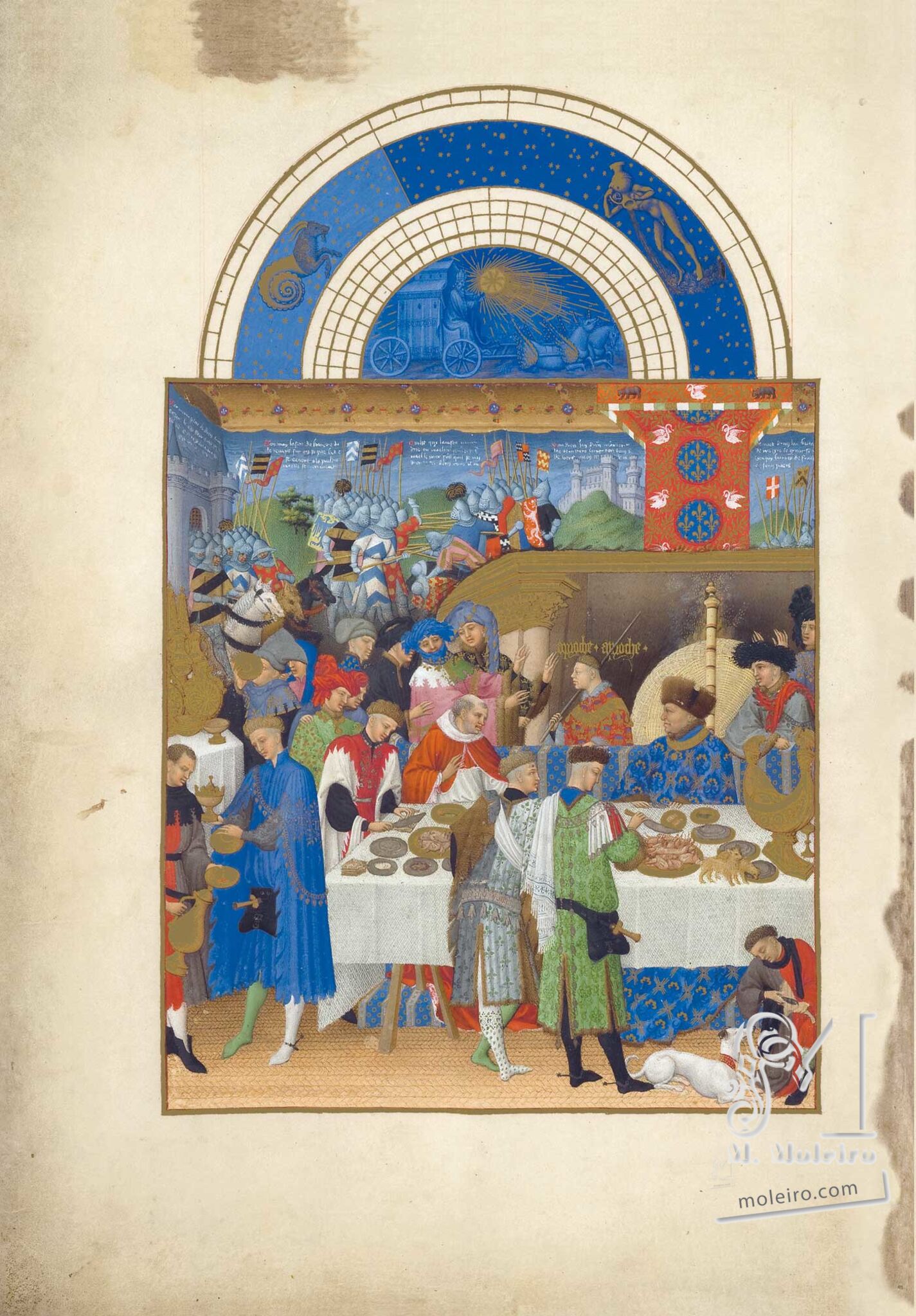Limbourg brothers
The chariot of the Sun passes from Capricorn to Aquarius. In his place, the Duke of Berry receives guests for a celebration of the arrival of the new year. The floor of the hall is covered with women matting. The scene apparently includes many of the habitués of the Duke's court, but not all of them can be identified. In the foreground we have four bare-headed young gentlemen, wearing richly adorned houppelandes (outer garments). They are cup-bearers and attendants who carve the meats. One wears the white band of the House of Armagnac. Their necks are bare, reflecting a new fashion of the early fifteenth century. At the invitation of the Master of the house (wearing a neck ornament with bezants, and bearing a baton on his shoulder, symbolising his office), other nobles — wearing chaperon headgear — approach the fire to warm their hands. The highly elaborate fashions of the court are fully reflected in the embroidered fabrics, jewellery, necklaces, belts and stoles with pendants, not to mention the detail of the dagger (dague à couillettes) thrust into the pouches carried by two of the gentlemen in the foreground — symbolizing virility. On the trestle table covered with a white cloth, two small dogs rush here and there amid the silver platters and dishes, near a ‘ship’ surmounted by the bear and swan. This ‘ship’, containing the Duke's gold plate, may well belong to the service described in the inventory of 1413, “in the manner of a ship, and at the ends quarterdeck and forecastle with a wounded swan on one [...] and on the other a bear”. We see, also, other tableware: beakers, flagons, aquamaniles (for washing hands at the table) and smoothed or veined wooden cups for “drinking new wine during winter”. At the table ends we find an attendant who acts as cup-bearer and another whose task is to “take care of the large greyhound” (he is feeding the white dog). Both wear the Duke's livery (grey and red, with black hood). Lastly, thanks to a fairly unusual perspective effect, we see the fighting horsemen of the tapestry in the background who have somehow made their way into the hall itself, amid the guests. The tapestries relate the story of Troy (we see the words, “The deeds of the great Troy”), reminding us that the peace and harmony reigning in this place are precious and that war may well break out elsewhere, despite the Peace of Arras, stipulated by Armagnacs and Burgundians in September 1414.
